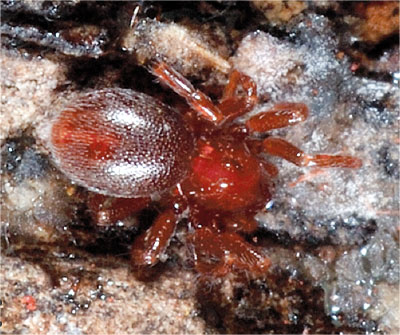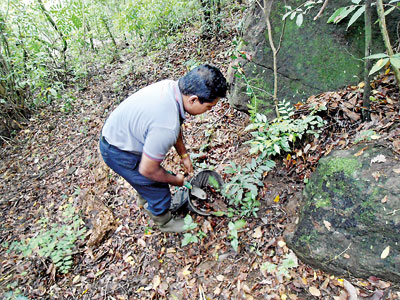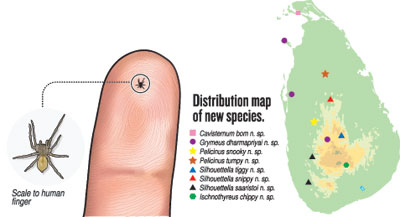News
The adventures of Bom, Chippy, Snooky and co.
With interest in books high this week with the Big Bad Wolf book sale reaching Sri Lanka, a second time, it seems fitting that names for six tiny spiders newly discovered in this country come from the books of the famous children’s writer, Enid Blyton.

Goblin spider. Pic by S.P. Benjamin
These goblin spiders, minute six-eyed creatures living in leaf litter, were discovered during a country-wide survey conducted by Professor Suresh Benjamin and Sasanka Ranasinghe of the National Institute of Fundamental Studies.
They will be known as Cavisternum bom, Ischnothyreus chippy, Pelicinus snooky, P. tumpy, Silhouetella snippy and S. tiggy after Blyton’s goblins Bom, Snooky and Tumpy, and brownies Chippy, Snippy and Tiggy, from The Goblins Looking-Glass (1947), Billy’s Little Boats (1971) and The Firework Goblins (1971).
In European folklore, according to the website, Science News, goblins and brownies are mischievous fairy-like creatures that live in human homes and even do chores while people are asleep in exchange for food.
“I enjoyed reading Enid Blyton as a child,” Prof. Benjamin said.
The six “Blyton goblins” are part of a group of nine discovered by Prof. Benjamin and Ms Ranasinghe, with the first three named after Sri Lankan literary giants, Carl Muller, Michael Ondaatje and Shyam Selvedorai.
“I enjoyed reading the work of these authors and, given their contribution to the field of literature, it was decided to name the new spiders after them,” said Prof. Benjamin at the time, his appreciation of literature clearly evident.
The new discoveries bring to 45 the number of scientifically detailed goblin spiders found in Sri Lanka, across 13 genera (groups). Goblin spiders, or Oonopidae, are one of the biggest spider families in the world, with more than 1,600 species.
They range from 1mm to 3mm in length and live in leaf litter, rarely spotted by people.
Prof. Benjamin said a characteristic of these spiders is that they do not make webs but actively hunt smaller prey such as soil mites and worms that wriggle through the humus of the forest floor.
The research team surveyed more than 100 localities all over Sri Lanka. “Many goblin spider species were often only found in a few sites whilst others were found only in a single forest patch and absent even in the immediate surrounding forests. These species, short-range endemics with very restricted distributions, may prove to be important flagship taxa [group of species] for monitoring the effects of climate change and other threats on forest habitats in Sri Lanka,” the research team stated.
The results of another study by Prof. Benjamin, on crab spiders, was also published earlier this month in the prestigious journal ZooTaxa. Crab spiders have two front pairs of legs angled outward and bodies that are flattened and often angular, also, like crabs. Crab spiders do not build webs and usually sit among flowers, bark, fruit or leaves to hunt visiting insects.
The new discoveries see Sri Lanka being home to 393 species of spiders. A large proportion of these species was described over the past two decades and almost all of the new species (55 of 58 new species) are endemic, currently not known outside Sri Lanka.

Field sampling


